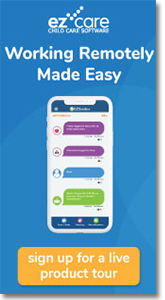ExchangeEveryDay Past Issues
 << Previous Issue
| View Past Issues | | Next Issue >>
<< Previous Issue
| View Past Issues | | Next Issue >> -Dolores Huerta
“Young children are whole-child learners...” writes Francis Wardle, PhD., in his popular book, Oh Boy! Strategies for Teaching Boys in Early Childhood. “They are also concrete hands-on learners…As a result, a variety of real-life, hands-on experiences are critically important for children this age. They need to manipulate, explore, use all their five senses, build, create, discover, take apart, experience, and engage in constant trial-and-error. This enables them to learn the basic properties of objects and materials, how things work together, and the nature of complex ideas such as floating and sinking, gravity, liquids and solids. This, in turn, builds a foundation for later, more complex, abstract, and higher-level thinking and learning, self-regulation, and symbolic or representational capacities. It is imperative that people who work with young children clearly understand the value of providing lots of hands-on learning experiences before moving to more complex and symbolic activities…
Just as young children learn differently than school-age children, there is an increasing body of research showing that young boys and girls develop and learn differently. Often schools and teachers are not only unaware of these differences, but sometimes interpret the natural ways boys learn and develop as oppositional, lazy or defiant. This would account for some of the overrepresentation of boys in special education, expulsion and suspension statistics.”
Strategies for Teaching Boys in Early Childhood to get 25% off this title for a limited time |
May not be combined with any other offer. |






Post a Comment